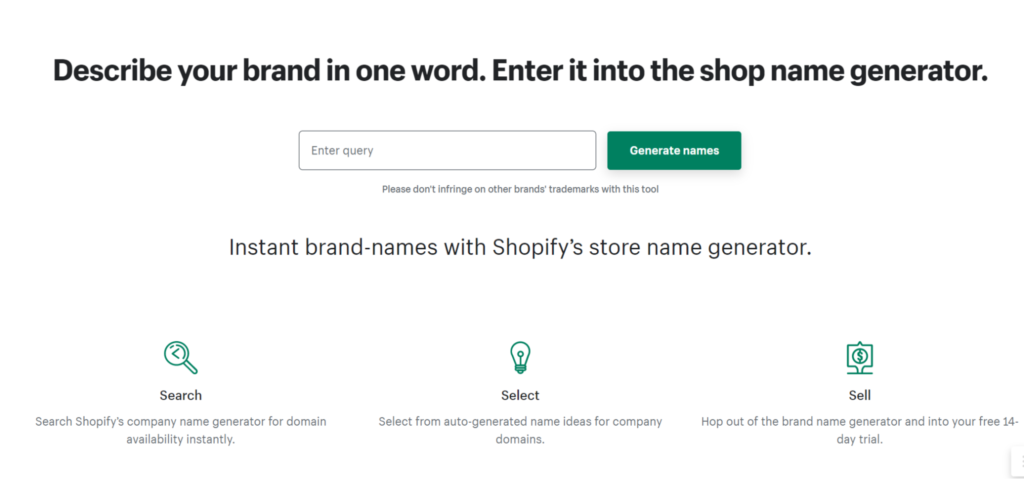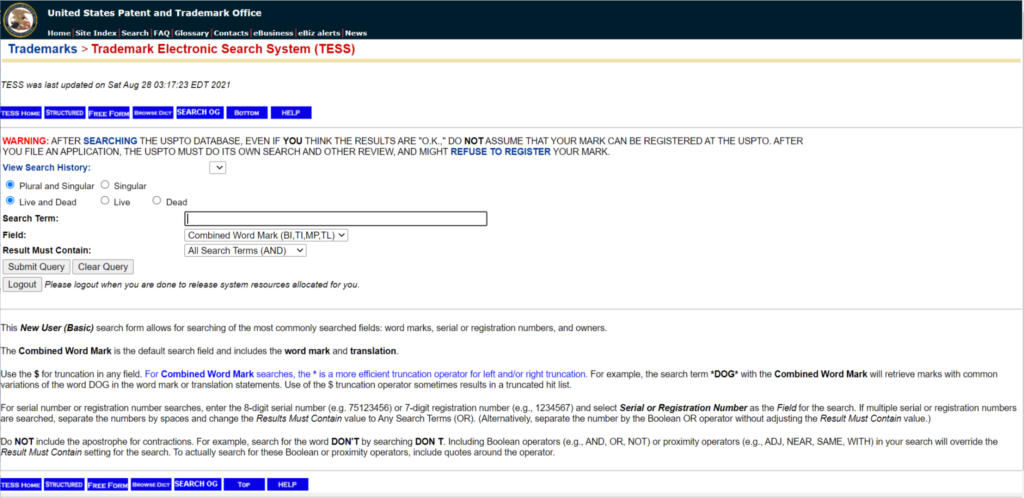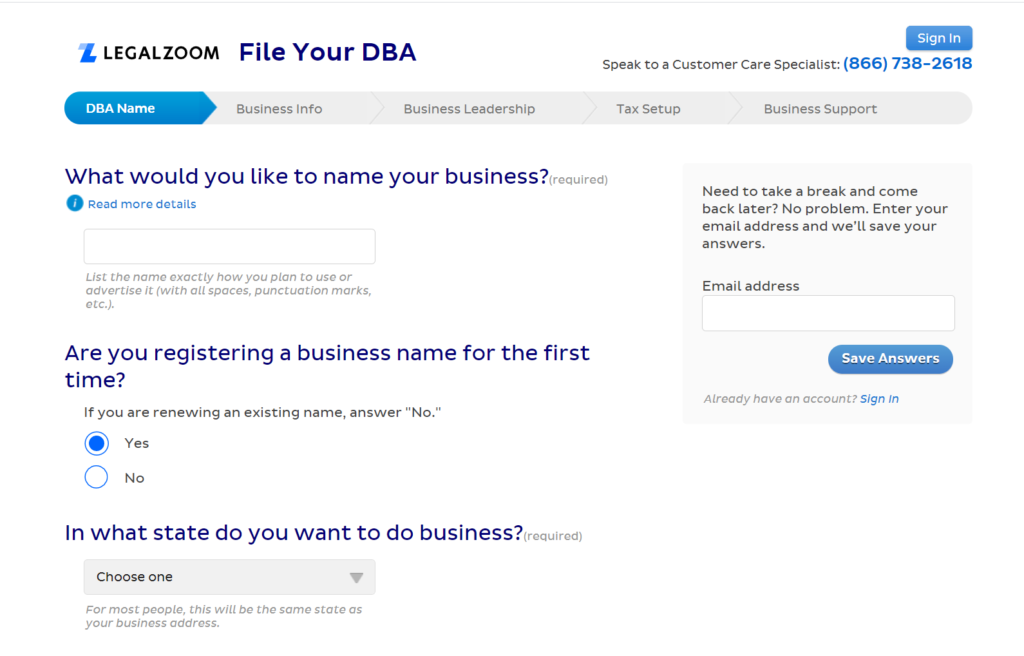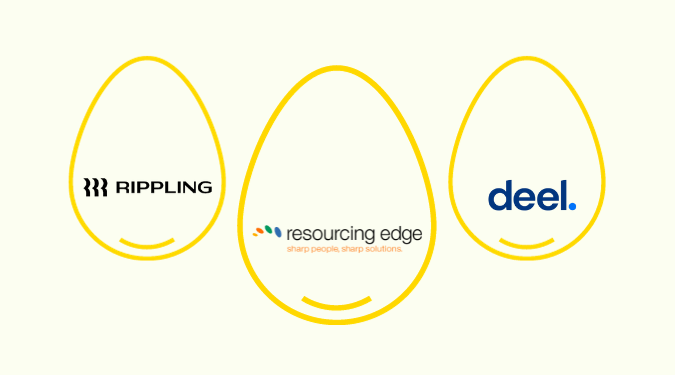Disclosure: This content is reader-supported, which means if you click on some of our links that we may earn a commission.
Getting a “Doing Business As” (DBA) certificate can add versatility to your business, letting you operate under a different business name. This can be particularly helpful for sole proprietors or LLCs who need more naming versatility without tons of legal paperwork and expenses. While applying for a DBA might sound like an overwhelming process, it’s actually quite easy, and with a little planning, you can complete the entire process on your own.
Why Getting a DBA is Worth It
Getting a DBA is a worthwhile investment for many businesses. With a DBA, you can operate under a name that’s different from your official registered business name. For example, if you’re a sole proprietor, you need to operate under your personal name unless you get a DBA. The same is true of an LLC. You’d need to do business under the legal name on your articles of incorporation, but a DBA lets you operate under a different name.
With a DBA, sometimes called a trade name or an assumed name, you can choose a name that best applies to your business without changing all of your legal paperwork. If you’re pivoting or exploring a new line of business, you could use a DBA for the new portion of your business. If you’re having regrets about the business name that you incorporated your business with, using a DBA can let you create a more memorable name that’s a better fit for what your business has evolved into.
A DBA can also help you to solve challenges you’re facing when you’re developing a new line or moving into a service area that’s somewhat unrelated to your current services. You can create a DBA to operate that particular arm of your business relatively independently, with its own branding and website. This simplifies the process of building and expanding your business without requiring you to incorporate your new venture as a separate business.
It’s important to understand that a DBA isn’t a legal entity, so it doesn’t bring your business any legal protection the way an LLC or other business entity would. That said, a DBA pays off in other ways. It can make your business appear more professional, especially if you’re getting a DBA so you can avoid using your personal name as a sole proprietor. A DBA lets you choose a name that’s more distinctive, and it might be a wise marketing move that can help you to better connect with customers or clients. Most banks require sole proprietors to have a DBA before they can apply for a business checking account.
Getting a DBA is relatively straightforward. Filing fees tend to be affordable, and in many cases, you can fill out the paperwork entirely by yourself, further keeping costs minimal. A lot rides on your business name, and a poor-quality name can confuse customers, make it difficult to retain repeat customers, and even cost you potential sales by failing to attract new customers. With a DBA, you can easily address naming issues, ensuring that your business’ name performs the way you need it to and supports all of the hard work you’re doing to build your business.
The Investment Needed to Get a DBA
Getting a DBA requires an investment of both time and money. DBA application fees vary by state, with some being as little as $10 while others can cost $100 or more. If you use a service like LegalZoom to help you complete the paperwork, you’ll need to budget for the additional cost of that service. LegalZoom charges $100 plus filing fees to apply for a DBA. If your state requires that you advertise the filing in a local paper, then be sure to include the cost for the advertisement in your budget, too.
If you’re building a large business and anticipate wanting to incorporate it under your DBA name, it’s worth it to consult a business attorney during the DBA application process. The same is true if you’ve put a lot of effort into your business name and logo and want to verify that neither is trademarked. Legal fees can be very expensive, but investing in a lawyer’s help right now could save you from big headaches and even bigger rebranding expenses later on.
The process of brainstorming and deciding on your DBA name can be very time-consuming, and is probably the longest part of the entire DBA application process. You want to be sure that your DBA name is a strong business name, one that you can use for years to come. Between brainstorming and making sure that your potential names aren’t trademarked, plan to invest plenty of time into this phase of the process. If you’re even considering getting a DBA in the future, it’s wise to start brainstorming names now so that you have several great options to choose from.
When it comes to actually completing the paperwork for your DBA application, the process is relatively quick and simple. It’s something that any business owner can complete on their own, though you will need to do some research into your state’s specific application requirements. If you’re not comfortable completing the paperwork by yourself, a program like LegalZoom can help to guide you through it, simplifying the process.
7 Steps to Get a DBA
Getting a DBA isn’t a terribly complicated process, but you do need to understand all of the steps that go into getting approved.
#1 – Brainstorm Names
Before you get your DBA, you’ll need to come up with the perfect name. You might already have one in mind, or you might be starting from scratch.
Now is the time to brainstorm ideal names for your business. An ideal business name should be meaningful, easy to spell, and easy to remember. You might be inspired by common phrases, mythology, foreign words, and more.
If you find it difficult to come up with the perfect name, you might try Shopify’s business name generator. This handy tool takes one descriptive word that you enter and generates multiple potential names for you to choose from.

Make a list of all of the potential names that you come up with, then start whittling that list down. Ask friends and family their thoughts on your top 10 names, and try to reach out to your target audience to get their reactions, too.
As you brainstorm names, keep in mind that you need to honestly represent your business. You can’t add on “Inc.” or “Corp.” if your business isn’t incorporated. The same goes for adding on “LLC.” While these terms may make a name sound more official, adding them on when you don’t have the legal business structure to justify using them is falsely representing your business. If you apply for a DBA with a name with that type of extension that doesn’t apply to your business, your application will be denied.
#2 – Check Potential Name Trademark Availability
As you narrow down your list of names to your top two or three picks, it’s important to check their availability. If you use a name that’s already trademarked by another business, that business could demand that you stop using the name. This would be a problem, since you would need to change your DBA, as well as all of your branding.
To determine if your potential DBA names are trademarked, you’ll need to search for the name on the United States Patent and Trademark Office’s website. You can search for a trademark in multiple ways, including a word mark search using words or phrases in your names.

This search is free and relatively easy to use.
#3 – Search the Secretary of State Records
If you think that you might ever want to register your business as a corporation or an LLC, then it’s important to not only make sure that your DBA name isn’t trademarked, but to also make sure that it’s not similar to a name that’s already registered. If your business name is too similar to an existing registered business’s name, your state won’t allow you to register that name. That could lead to a required name change if you ever want to become an LLC or corporation.
To perform this search, you’ll need to access the business directory on your state’s Secretary of State website. These forms will vary, but most allow you to search by your business name or by a phrase included in your business name.
#4 – Research Your State’s DBA Application Requirements
Every state has its own DBA application and corresponding requirements. Each state also decides on the filing fee required to apply for a DBA.
Most states require that you complete a DBA application and submit a filing fee. Some may also require you to post an ad in your local neighborhood identifying the DBA name that you’re applying for.
You can find your state’s specific DBA application requirements in the business section of your state’s website. Most town clerks will also have this information and the DBA application available.
If you don’t want to do the legwork of calling up or going down to your town hall, consider using LegalZoom. With LegalZoom, you can access your state-specific DBA requirements and complete the paperwork online, saving you time.
#5 – Complete and File Your DBA Paperwork
Once you’re familiar with your state’s DBA requirements and have chosen a DBA name, you’re ready to complete and file your DBA paperwork. You can do this in person at your town clerk’s office, or your town might make these forms available online.
If you want to save yourself the trip down to your town hall, you can complete this paperwork online with LegalZoom. You’ll need to choose the state where you’re filing for your DBA, and LegalZoom will load up the correct paperwork for your state. LegalZoom will even take care of putting a notice in your local newspaper, if that’s a requirement in your state.

Using LegalZoom to file your paperwork can save you time and can be a highly convenient option. The platform will guide you through the paperwork completion process, and LegalZoom fees are refundable during the first 60 days if you’re not pleased with the service.
#6 – Wait to Be Approved
Once you’ve filed your paperwork, you’ll need to wait for your DBA to be approved before you can start using the name. Processing times can vary, so try to start the process well ahead of time so you don’t have to worry about anxiously waiting to be approved for your DBA.
Once your application is approved, your state will contact you by mail or email. Then, you’ll be able to start using your new business name.
#7 – Review Rules About Renewals
Once you have your DBA, it’s essential to get the details about how and when you’ll need to renew it. Most states require DBA renewals every five years. These can usually be completed online, but it’s a good idea to set yourself a calendar reminder so you don’t overlook the important renewal process.
Next Steps
Once your DBA is approved, you’ll need to develop marketing and business materials under that name. Your business branding should reflect your DBA, so plan on developing a logo, a slogan, and all of your marketing materials around this new name.
If you haven’t done so already, buy a website domain that reflects your DBA name. As you develop your branding, you can start to build your website and social media pages, too.
You may also want to file for an EIN, or employer identification number, to use when filing your taxes. Some sole proprietors use their social security number to file taxes, but when you’re running a business, using this number can get risky. Your social security number will be on lots of paperwork, including on contracts that you may have to email to clients.
It’s safer to file for an EIN. This number is connected to your principal business, meaning you can use the same EIN for your main business and for any DBAs that you operate. You can apply for an EIN on the IRS website.















